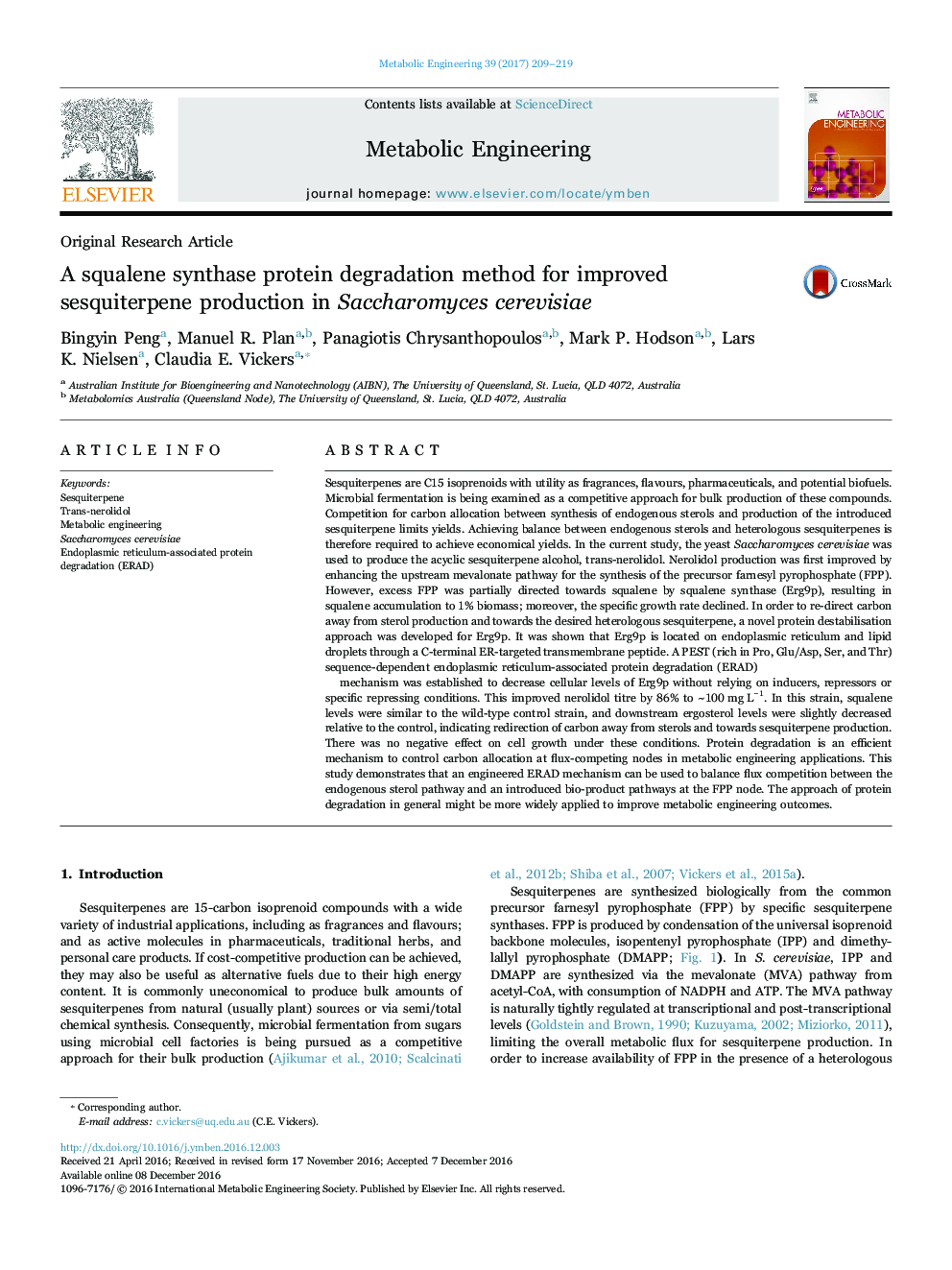| کد مقاله | کد نشریه | سال انتشار | مقاله انگلیسی | نسخه تمام متن |
|---|---|---|---|---|
| 6452808 | 1418339 | 2017 | 11 صفحه PDF | دانلود رایگان |

- Squalene synthase was modulated by a protein degradation mechanism.
- Squalene synthase C-terminal peptide is an ER-targeting transmembrane signal peptide.
- A mechanism was engineered to degrade ER membrane-integrating protein.
- Enterococcus mvaS and mvaE were used to improve sesquiterpene production in yeast.
- Destabilizing squalene synthase redirects carbon flux to nerolidol production.
Sesquiterpenes are C15 isoprenoids with utility as fragrances, flavours, pharmaceuticals, and potential biofuels. Microbial fermentation is being examined as a competitive approach for bulk production of these compounds. Competition for carbon allocation between synthesis of endogenous sterols and production of the introduced sesquiterpene limits yields. Achieving balance between endogenous sterols and heterologous sesquiterpenes is therefore required to achieve economical yields. In the current study, the yeast Saccharomyces cerevisiae was used to produce the acyclic sesquiterpene alcohol, trans-nerolidol. Nerolidol production was first improved by enhancing the upstream mevalonate pathway for the synthesis of the precursor farnesyl pyrophosphate (FPP). However, excess FPP was partially directed towards squalene by squalene synthase (Erg9p), resulting in squalene accumulation to 1% biomass; moreover, the specific growth rate declined. In order to re-direct carbon away from sterol production and towards the desired heterologous sesquiterpene, a novel protein destabilisation approach was developed for Erg9p. It was shown that Erg9p is located on endoplasmic reticulum and lipid droplets through a C-terminal ER-targeted transmembrane peptide. A PEST (rich in Pro, Glu/Asp, Ser, and Thr) sequence-dependent endoplasmic reticulum-associated protein degradation (ERAD)mechanism was established to decrease cellular levels of Erg9p without relying on inducers, repressors or specific repressing conditions. This improved nerolidol titre by 86% to ~100 mg Lâ1. In this strain, squalene levels were similar to the wild-type control strain, and downstream ergosterol levels were slightly decreased relative to the control, indicating redirection of carbon away from sterols and towards sesquiterpene production. There was no negative effect on cell growth under these conditions. Protein degradation is an efficient mechanism to control carbon allocation at flux-competing nodes in metabolic engineering applications. This study demonstrates that an engineered ERAD mechanism can be used to balance flux competition between the endogenous sterol pathway and an introduced bio-product pathways at the FPP node. The approach of protein degradation in general might be more widely applied to improve metabolic engineering outcomes.
Journal: Metabolic Engineering - Volume 39, January 2017, Pages 209-219